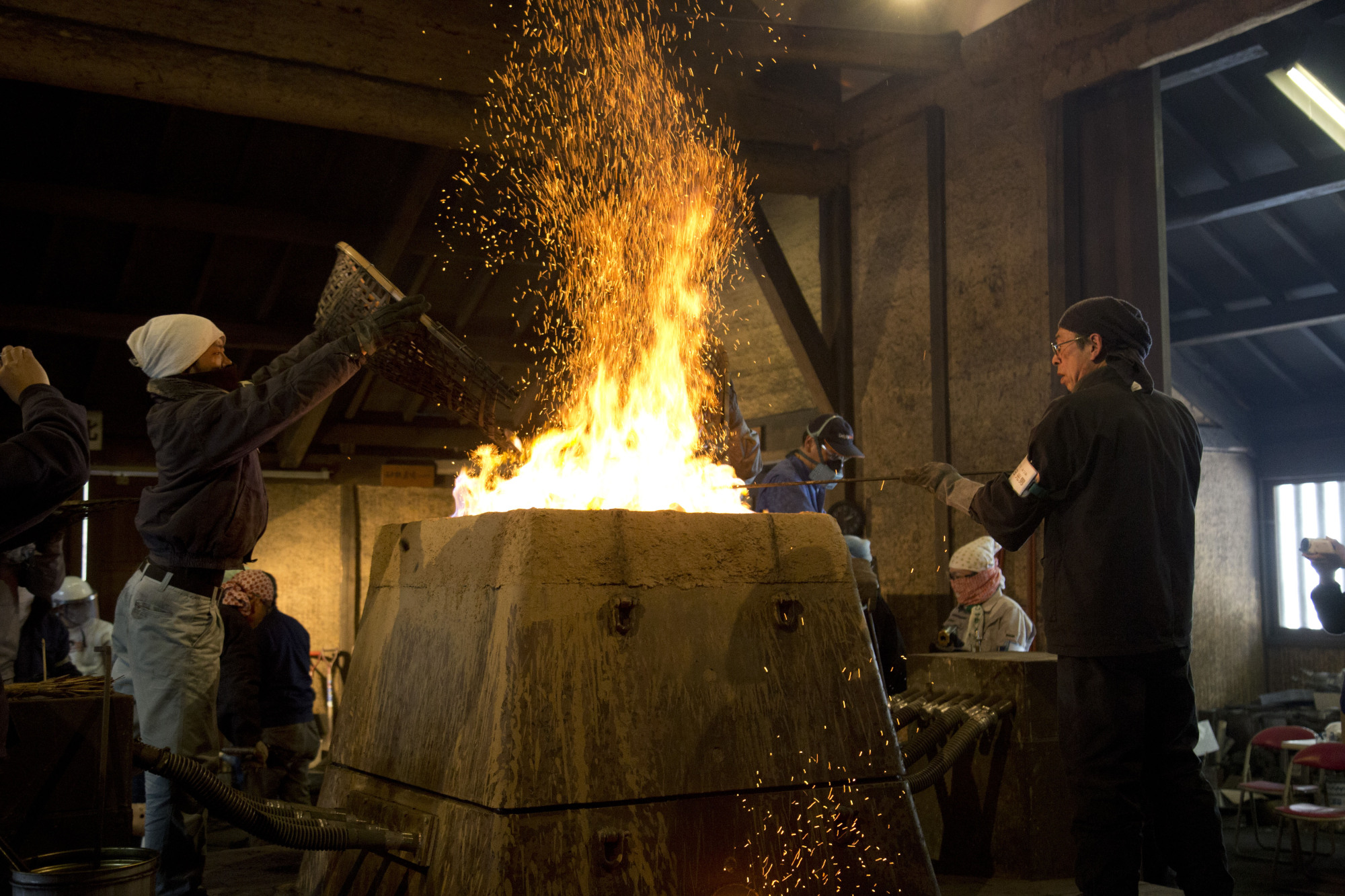For years I've heard that Japanese swords are special, but I couldn't have told you why. It was only on a recent trip to Shimane Prefecture that I learned that the legendary strength and beauty of the Japanese sword begins with an ancient steelmaking process called tatara. Shimane is the only place in Japan where the tradition is kept alive; one mountain town is now the exclusive source for the top-quality steel — called tamahagane — needed by craftsmen who make swords.
No one knows precisely when ironmaking began in Japan, but scholars believe people learned how to make iron during the Yayoi Period (200 B.C.-250 A.D.). While modern steelmaking relies on iron ore, processed in blast furnaces fired with coking coal, traditional Japanese steelmaking used iron sand as the main raw material. Plentiful in Shimane and other parts of western Japan, iron sand was collected from mountain areas and smelted in furnaces fueled by charcoal made from trees in nearby forests.
One production cycle required 13 to 15 tons of charcoal and as much iron sand, yielding 3 to 4 tons of pig iron and steel. The work was demanding and dangerous, requiring three days and nights of round-the-clock labor. Air had to be pumped into the fire continuously to keep it hot. This was accomplished with powerful bellows operated by as many as six men at once. The result was a huge slab of crude steel, which was broken up, sorted and further processed. Only a small amount was good enough to be classified as tamahagane.

















With your current subscription plan you can comment on stories. However, before writing your first comment, please create a display name in the Profile section of your subscriber account page.